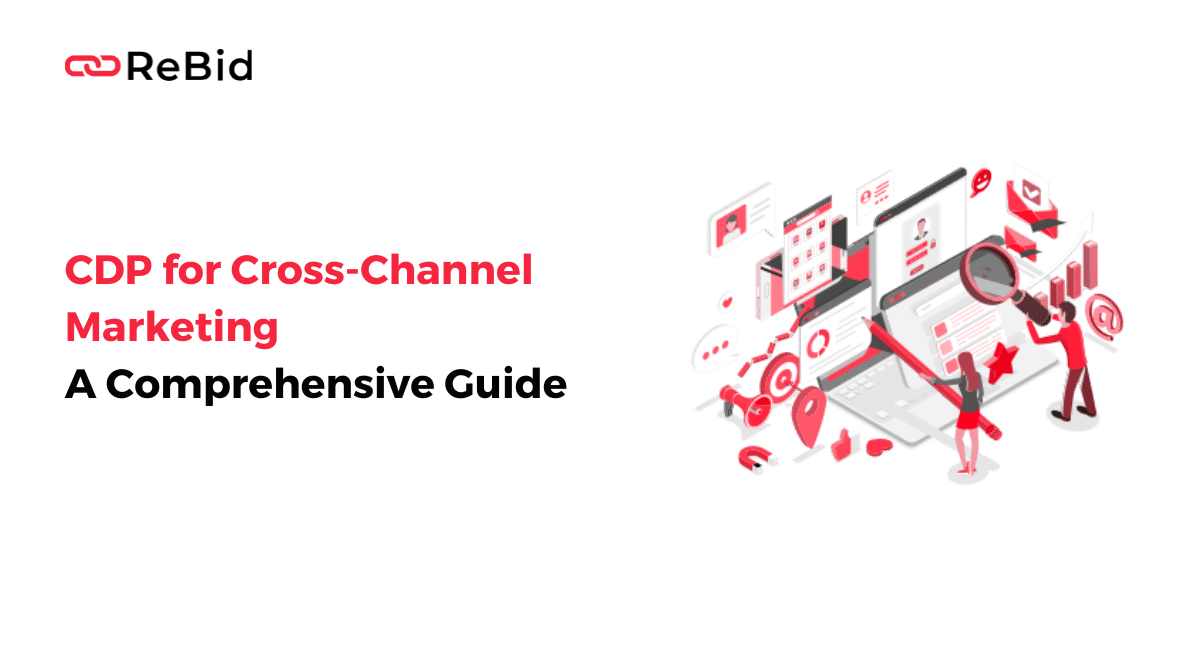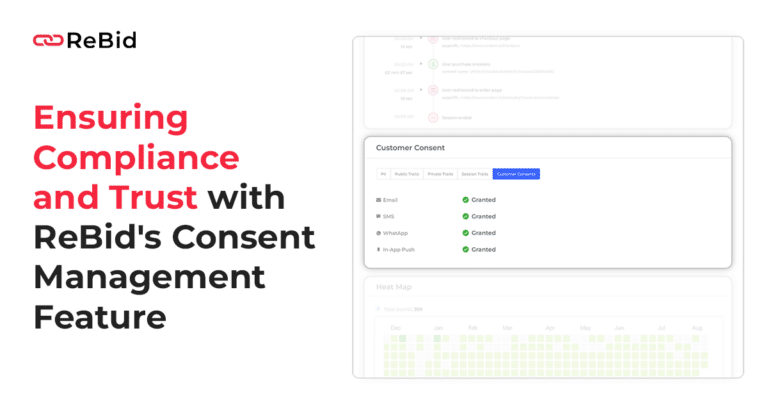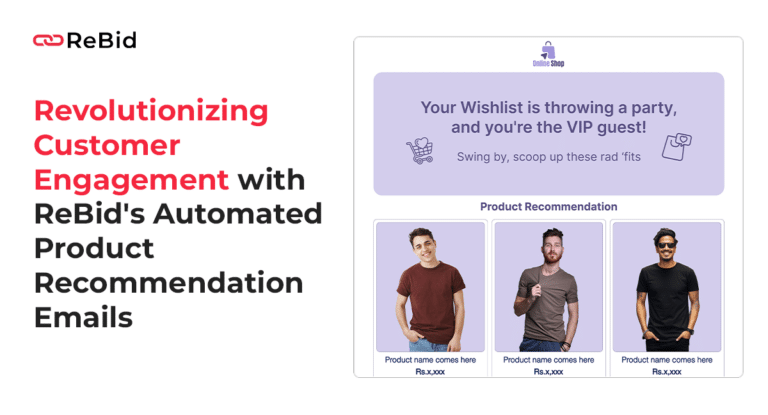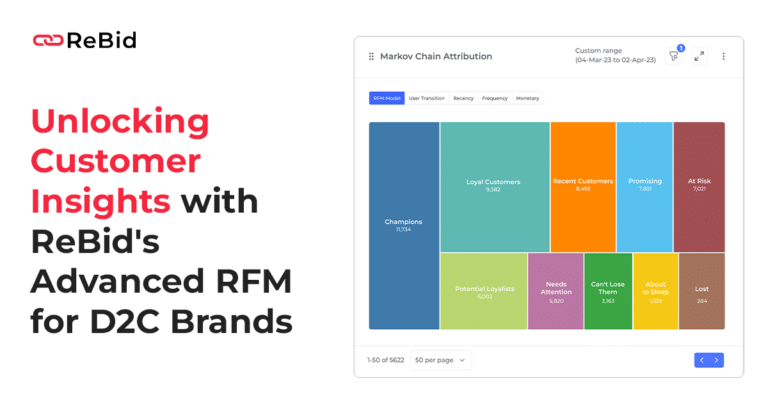In today’s fast-paced and interconnected world, businesses are constantly searching for innovative ways to engage with their customers across multiple channels. One of the most effective tools in their arsenal is a Customer Data Platform (CDP). A CDP enables businesses to collect, organize, and activate customer data from various sources, allowing them to create highly targeted and personalized marketing campaigns. In this article, we will explore the concept of CDP for cross-channel marketing and delve into its benefits, challenges, and best practices.
I. Understanding the Customer Data Platform (CDP)
A. Definition and Functionality
A Customer Data Platform (CDP) is a centralized system that collects and consolidates customer data from diverse sources such as websites, mobile apps, social media platforms, and offline interactions. It offers a unified view of customer information, enabling businesses to gain deep insights into customer behavior, preferences, and interactions across various touchpoints.
The primary functionality of a CDP involves data integration, data cleansing, data storage, and data activation. It integrates data from multiple sources, removes duplicates or inconsistencies, and stores it in a structured format. Moreover, a CDP allows businesses to activate this data by creating segments, generating audience profiles, and delivering personalized marketing messages across different channels.
B. Key Features of a CDP
Data Integration: A CDP seamlessly brings together data from various sources, such as CRM systems, e-commerce platforms, email marketing tools, and more. It eliminates data silos and provides a comprehensive view of each customer.
Customer Profile Creation: With a CDP, businesses can create detailed customer profiles that include demographic information, purchase history, browsing behavior, and social media interactions. These profiles enable precise targeting and personalization.
Real-time Data Updates: A CDP continuously updates customer data in real-time, ensuring that businesses have the latest and most accurate information at their disposal. This allows for timely and relevant interactions with customers.
Segmentation and Audience Building: By leveraging the collected data, a CDP enables businesses to segment their customer base into distinct groups based on various criteria. This segmentation facilitates the creation of highly targeted marketing campaigns.
Omnichannel Activation: A CDP empowers businesses to engage with customers across multiple channels, including email, social media, mobile apps, websites, and more. It ensures a consistent and cohesive customer experience across these touchpoints.
II. Benefits of CDP for Cross-Channel Marketing
A. Enhanced Customer Understanding
A CDP provides businesses with a holistic view of their customers. By consolidating data from different channels, it helps them understand customer preferences, interests, and behaviors in a comprehensive manner. This deep customer understanding forms the foundation for effective cross-channel marketing strategies.
B. Personalized and Relevant Messaging
With a CDP, businesses can leverage the power of personalization to deliver tailored marketing messages to each customer. By analyzing individual customer profiles and segments, businesses can create highly relevant content and offers, increasing customer engagement and conversion rates.
C. Improved Customer Journey
A CDP enables businesses to map and optimize the customer journey across multiple channels. By tracking customer interactions and touchpoints, businesses can identify gaps or friction points and implement strategies to enhance the overall customer experience.
D. Increased Marketing Efficiency
By leveraging the insights provided by a CDP, businesses can optimize their marketing efforts. They can allocate their resources more effectively by targeting the right audience, selecting the most appropriate channels, and delivering personalized messages at the right time. This leads to improved ROI and marketing efficiency.
III. Challenges in Implementing CDP for Cross-Channel Marketing
A. Data Integration Complexity
Integrating data from diverse sources can be a complex task. Different systems may use different data formats and structures, requiring significant effort to harmonize and consolidate the data. Additionally, ensuring data quality and accuracy during the integration process is crucial for effective cross-channel marketing.
B. Privacy and Compliance
With the increasing focus on data privacy regulations, businesses must ensure that customer data is collected, stored, and utilized in compliance with relevant laws. Implementing proper data governance practices and obtaining necessary consents from customers are vital for maintaining trust and avoiding legal issues.
C. Skill and Resource Requirements
Implementing and managing a CDP requires a combination of technical expertise and marketing acumen. Businesses need skilled professionals who can handle data integration, analysis, and activation effectively. Adequate resources, both human and technological, must be allocated to ensure successful implementation and ongoing maintenance of the CDP.
IV. Best Practices for CDP Implementation
A. Clearly Define Objectives and Use Cases
Before implementing a CDP, businesses should clearly define their objectives and use cases. Identifying specific marketing goals and outlining how a CDP can help achieve them will provide a clear roadmap for implementation.
B. Prioritize Data Quality and Governance
Ensuring data quality and establishing robust data governance practices are crucial for the success of a CDP implementation. Businesses should have processes in place to validate, clean, and maintain the integrity of customer data.
C. Invest in Training and Skill Development
Businesses should invest in training their teams to effectively utilize the CDP. Providing employees with the necessary skills and knowledge will enable them to maximize the potential of the platform and drive successful cross-channel marketing campaigns.
D. Continuously Monitor and Optimize
Implementing a CDP is not a one-time activity; it requires ongoing monitoring and optimization. Businesses should regularly review the performance of their cross-channel marketing efforts, analyze customer data, and make necessary adjustments to improve outcomes.
The Future of Cross-Channel Marketing with ReBid
As the digital landscape continues to evolve, advertisers must adapt to new challenges and embrace innovative solutions. ReBid, the Advertiser’s Customer Data Platform (CDP), is at the forefront of shaping the future of cross-channel marketing.
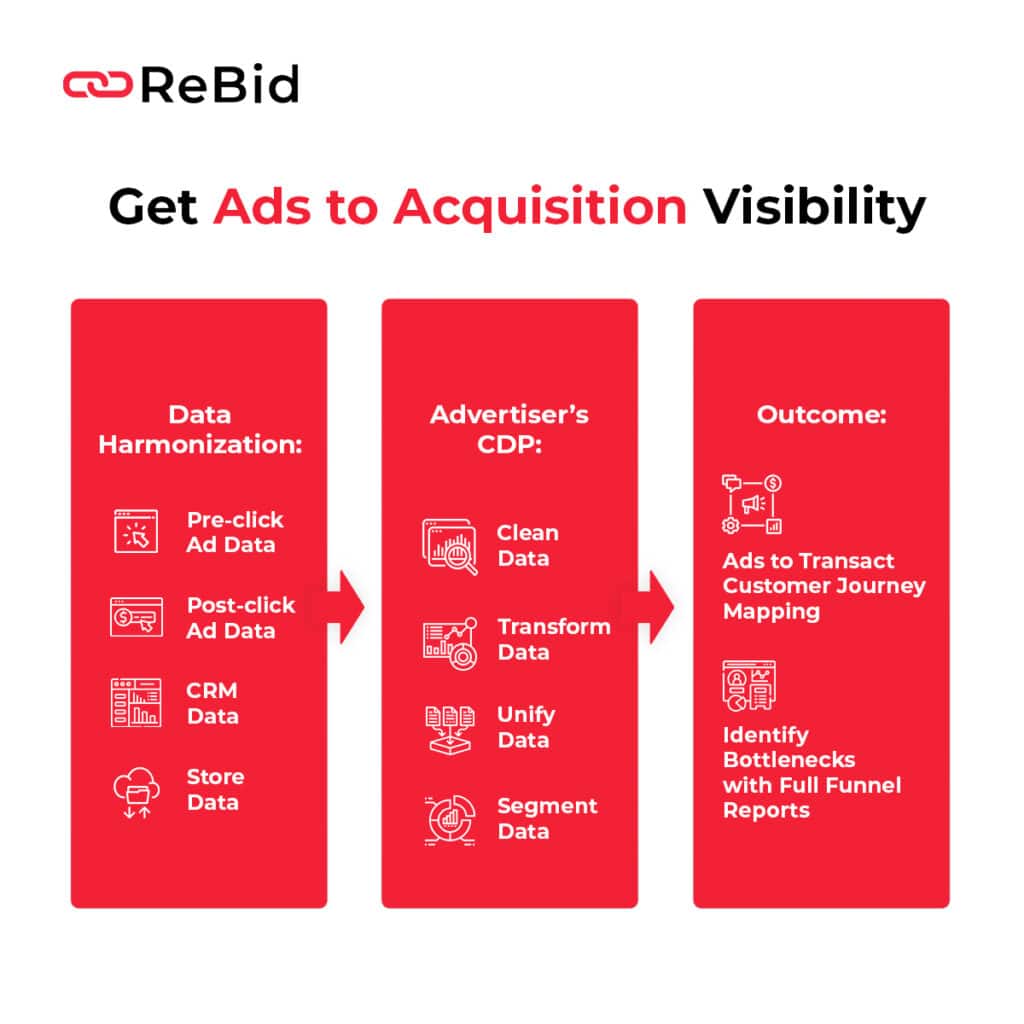
By providing full-funnel visibility, optimizing Return on Ad Spend (ROAS) in a cookieless future, enhancing advertising efficiency, facilitating better audience understanding, and offering time and cost-saving benefits, ReBid empowers advertisers to stay ahead of the curve. With its unique ad-to-transaction visibility, ReBid unlocks invaluable insights that guide advertisers in creating impactful and personalized marketing campaigns. The future of cross-channel marketing is bright with ReBid leading the way. Talk to a ReBid Expert today!

